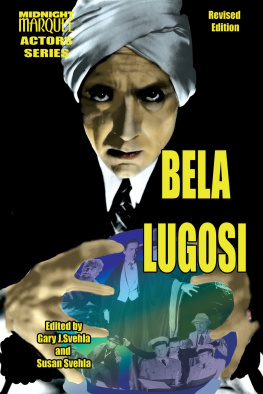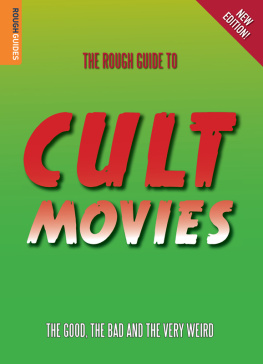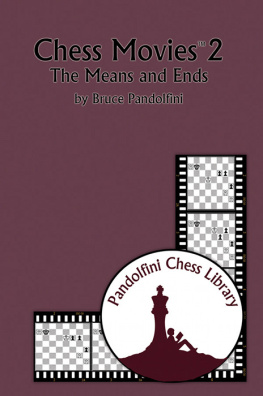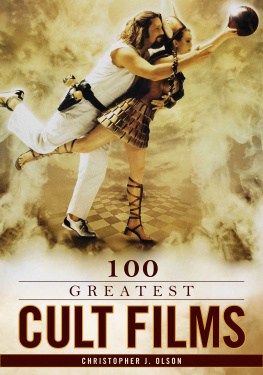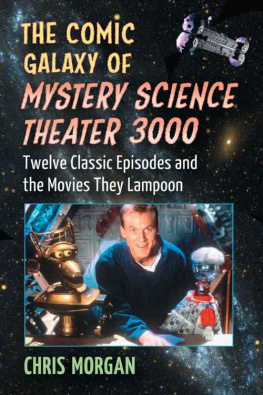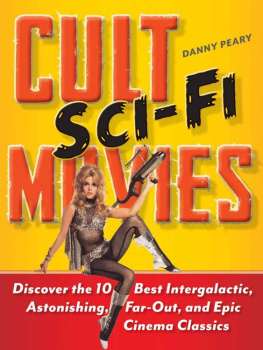More Cult Movies ebooks available now!
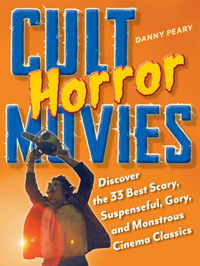
Cult Horror Movies
| 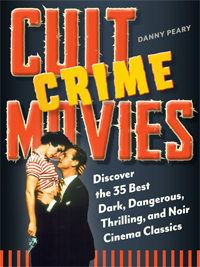
Cult Crime Movies
|
Danny Peary pretty much coined the term cult movies.
Edgar Wright, director
Delightfully readable, perceptive, and offbeatand so much fun, the Cult Movie books are a great escape into Danny Pearys wonderland of weird taste.
Los Angeles Times
Virtually impossible to put down, crammed with all sorts of obscure information, offbeat interpretations and criticism. Peary not only makes us want to catch and enjoy obscure, underrated gems but also offers new insight into old favorites a book for both the fan and the serious student.
Publishers Weekly
Wild bunches of film freaks would brave the badlands of a forbidden planet for a compendium like this. Heres a performance that will help you trash a hard days night or two.
Playboy
Click here to buy
Cult Midnight Movies
Discover the 37 Best Weird, Sleazy, Sexy, and Crazy Good Cinema Classics
Danny Peary
Workman Publishing New York
Copyright 2014 by Danny Peary
Cult Midnight Movies features content previously published in Cult Movies, Cult Movies 2, and Cult Movies 3.
eISBN: 9780761181699
Cover photo credit: Photofest
Photo credits go to the following: New Yorker Films, New World, Mitchell Brothers Film Group, 20th Century Fox, De Laurentiis Entertainment Group, Caribbean Films, Warner Bros., Paramount, Columbia, ABKCO, Libra Films, Russ Meyer & Associates, MGM, Screen Classics, Sigma III, United Artists, CineVista, Rochelle Films, Walter Reade Organization, Herbert R. Steinmann-Billy Baxter, New Line Cinema, Distributors Corporation of America, World Northal, Motion Pictures Ventures, Cinema 5, Universal
Randall Lotowycz assisted in compiling the cult midnight movie checklist.
All rights reserved. No part of this book may be reproduced or transmitted in any form or by any means, electronic or mechanical, including photocopying, recording or by any information storage and retrieval system, without the written permission of the Publisher, except where permitted by law.
Workman Publishing Co., Inc.
225 Varick Street
New York, NY 10014-4381
workman.com
WORKMAN is a registered trademark of Workman Publishing Co., Inc.
Introduction
Cult movies were once considered to be only those obscure pictures that were admired by a small, sad coterie of film experts and other social outcasts. But I choose to define cult movies quite broadly. I consider them those special films that elicit a fiery passion in moviegoers long after their initial releases; that have been taken to heart as if they were abandoned orphans in a hostile world, cherished, protected, and enthusiastically championed by segments of the movie audience; that are integral parts of peoples lives. Cultists dont merely enjoy their favorite films; they worship them, seek them out wherever they are playing, see them repeatedly, and are intent on persuading anyone who will listen that they should be appreciated regardless of what reviewers thought. They will brave blizzards, skip their weddings, ignore their most solemn religious holidays, and even date their least-appealing cousins to see a film for what may be their tenth, twentieth, or one hundredth time.
When you speak of cult movies, you speak in extremes. Hardcore cultists, ranging from polite to lunatic, insist that their favorite films are the most intriguing, unusual, outrageous, mysterious, absurd, daring, entertaining, erotic, exotic, and/or best films of all time. Also they point out that cult films differ radically from standard Hollywood films in that they characteristically feature atypical heroes and heroines; offbeat dialogue; surprising plot resolutions; highly original storylines; brave themes, often of a sexual or political nature; definitive performances by stars who have cult status; the novel handling of popular but stale genres. Outstanding special effects, spectacular camerawork, and a willingness by the filmmakers to experiment distinguish many cult films, but adoration for some, like Reefer Madness, has absolutely nothing to do with admiration for the filmmakers skillsits often to the contrary.
The typical Hollywood product has little potential for becoming a cult favorite because it is perceived by everyone in basically the same way. Almost everyone agrees on the quality of these films, on what the directors are trying to say, and on the correct way to interpret the films messages. On the other hand, the great majority of cult films are born and live in controversy, in arguments over quality, themes, talent, and other matters. Cultists believe they are among the blessed few who have discovered something in particular films that the average moviegoer and critic have missedthe something that makes the pictures extraordinary. They grasp the elusive points of their favorite films, the filmmakers most personal visions, the cult stars real selves coming through; and they find glory in the belief that they are among the few on the same wavelength as the people involved in making these films. While word of mouth certainly plays a large part in the growth of cults for individual films, what is fascinating is that in the beginning pockets of people will embrace a film they have heard nothing about while clear across the country others independently will react identically to the same picture. There is nothing more exciting than discovering you are not the only person obsessed with a picture critics hate, the public stays away from en masse, and film texts ignore.
In this book on midnight movies, I have included prime examples of various types of cult films. You will find pictures that reviewers attacked and, almost as a reflex action, film enthusiasts rallied around; pictures hated by the average moviegoer as much as by the press that have been saved from oblivion by a cult of out-of-the-mainstream critics and film scholars; pictures underrated or neglected by everyone at the time of their releases that recently have been rediscovered and reevaluated; pictures that have gained popularity because they star performers who have become cult stars or were made by filmmakers who likewise have become cult figures; pictures for which we have nostalgic feelings because they had great impact on us when we were kids; pictures that are so out of the ordinary that attending them has become a communal event. You see that what really differentiates cult movies is that they can be discussed not only in terms of their genres but also in terms of their fans.
Aguirre, the Wrath of God
1972 (Germany) Distributed in the U.S. in 1977 by New Yorker Films
Director: Werner Herzog
Producer: Werner Herzog
Screenplay: Werner Herzog
Cinematography: Thomas Mauch
Music: Popol Vuh
Editor: Beate Mainka-Jellinghaus
Running Time: 93 minutes
Color
Cast: Klaus Kinski (Don Lope de Aguirre), Ruy Guerra (Don Pedro de Ursa), Del Negro (Brother Gaspar de Carvajal), Helena Rojo (Iez), Cecilia Rivera (Flores), Peter Berling (Don Fernando de Guzman), Danny Ades (Perucho).
Synopsis: In 1560, a large party of Spanish conquistadores under the command of Gonzalez Pizarro, their lavishly dressed ladies, and Indian bearers march from Quito across the Andes in search of El Dorado, the legendary city of gold. It is a frightful journey. Men in full armor must drag cannons on narrow mountain paths and through scorching jungles. Pizarro decides it best to send an expeditionary force ahead to see if there are hostile Indians lurking about and if El Dorado is in the direction they are going. Meanwhile, the rest of the party will make camp and await its return.


